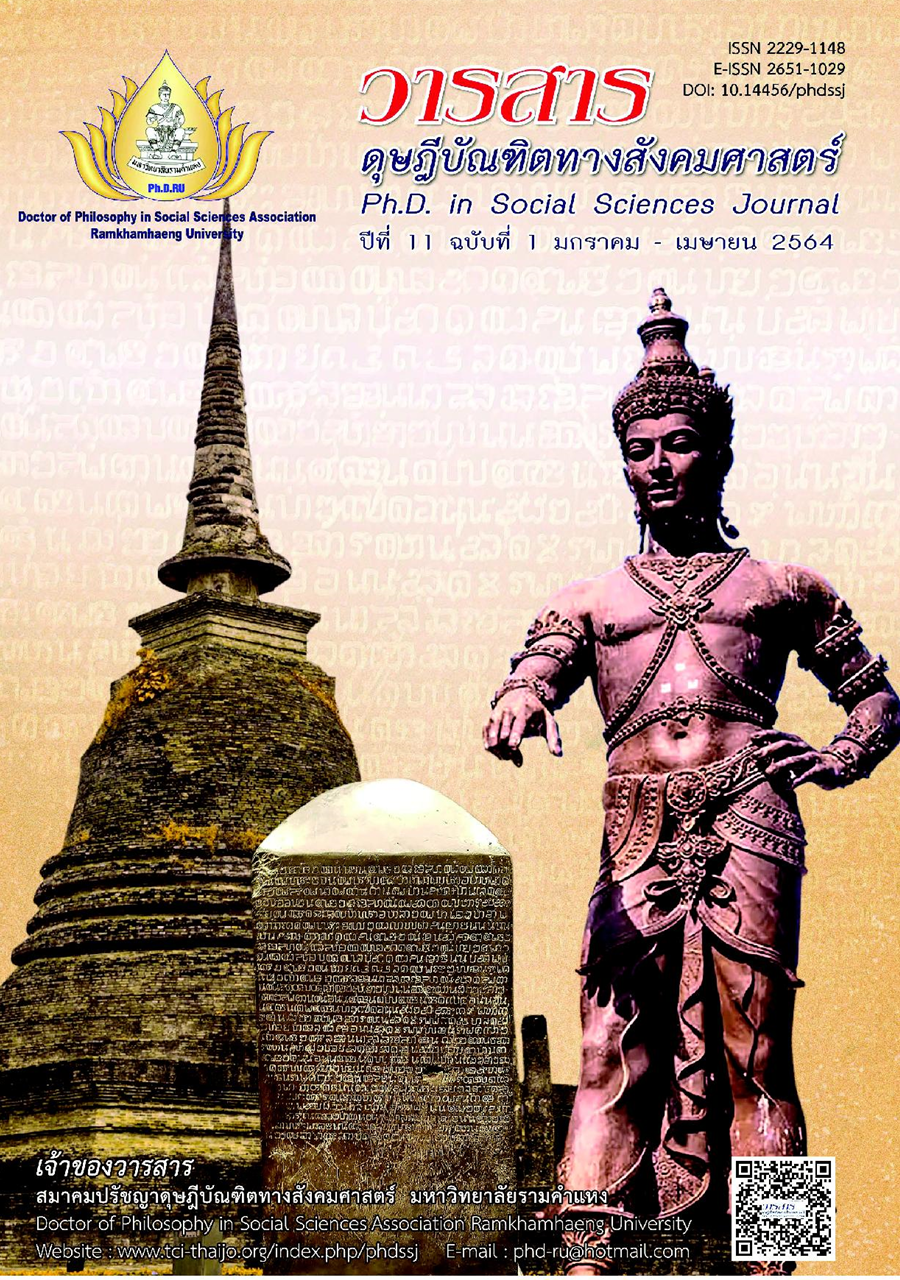The Factors Influencing Competitive Performance Modal for Retail Businesses in Thailand
Main Article Content
Abstract
The objectives of research are (1) to examine the harmonization of the structural equation model for the retail business competition in Thailand and (2) to analyze the model of the structural equation of factors that directly influence the creation of competitive performance for retail businesses in Thailand. The data were collected from 380 retail business operators in Thailand and analyzed by using the structure equation model (SEM)
The research result indicates that every index passes the standard criteria of Chi-Square/df = 1.026, p-value = 0.407, RMR = 0.018, RMSEA = 0.008, CFI = 0.998, GFI = 0.967 and AGFI = 0.954 The study summarizes that the results of analysis are consistent with the empirical data. The factors influencing the competitive performance include effective consumer response, which is the most direct influence factor for the competitive performance and the next factors are cooperation of business partners, supply chain management and leadership of the executives of the new decade indicating the direct influence of 0.409, 0.222 and 0.213 respectively, with statistically significant levels at 0.01 The results jointly explains the competitive performance for retail businesses in the country by data collecting from retail business operators in Thailand at 57.3 percent (R2 = 0.573)
Article Details
Academic articles, research articles, and book reviews in the Ph.D. in Social Sciences Journal are author’s opinions, and not the publisher’s, and is not the responsibility of the Ph.D. in Social Sciences Journal Philosophy Association, Ramkhamhaeng University. (In the case that research is done on human, the researcher has to be trained in Ethics for Doing Research on Human Training and has to produce the evidence of the training).
References
Adam, L. (2012). Inside apple: How America most admired and secretive company really works. Business Plus.
Asare, A. K. (2008). The role of the supplier in marketing process innovation and value creation. Doctoral dissertation (management), University of Massachusetts Amherst.
Bateman, T. S., & Zeithaml, C. P. (1990). Management: Function and strategy. Irwin.
Cook, L. S., Heiser, D. R., & Sengupta, K. (2011). The moderating effect of supply chain role on the relationship between supply chain practices and performance: An empirical analysis. International Journal of Physical Distribution & Logistics Management, 41(2), 104-134.
Daft, R. (2016). Organizational theory & design (12th ed.). Cengage Learning.
Department of Business Development. (2016). Wholesale and retail business promotion – wholesale retail business. Author. [In Thai]
Department of Business Development. (2018). Statistics of the number of export businesses in Thailand in 2018. Ministry of Commerce. Author. [In Thai]
Diamantopoulos, A., & Siguaw, A. D. (2000). Introducing LISREL: A guide for uninitiated. Sage.
Esquivias, P., Ramos, P., & Souza, R. (2010). Business model adaptation in retail: A growing need. The Boston Consulting Group.
Field, A. (2005). Discovering statistics using SPSS (2nd ed.). Sage.
Gordon, J. R., Mondy, R. W., Sharplin, A., & Premeaux, S. R. (1990). Management and organizational behavior. Allyn and Bacon.
Green, K. W., Zelbst, P. J., Meacham, J., & Bhadauria, V. S. (2012). Green supply chain management practices: Impact on performance. Supply Chain Management: An International Journal, 17(3), 290-305.
Hair, J. F., Black, W. C., Babin, B. J., & Anderson, R. E. (2010). Multivariate data analysis: A global perspective. Prentice Hall.
Huo, B. (2012). The impact of supply chain integration on company performance: An organizational capability perspective. Supply Chain Management: An International Journal, 17(6), 596-610.
Hsieh, P.-F., & Lee, C-S. (2012). A note on value creation in consumption-oriented regional service clusters. Competitiveness Review: An International Business Journal incorporating Journal of Global Competitiveness, 22(2), 170-180.
Kaplan, R. S., & Norton, D. P. (1996). The balanced scorecard. Harvard Business Press.
Kerdpitak, C., Piriyakul, M., Charupathiran, S., & Sirisuk, P. (2009). Increasing competitive advantage with logistics strategies in the oil palm industry. of the 9th Seminar in Logistics and Supply Chain Management (Thai VCML 2009) (pp.19-21). November 2009. [In Thai]
Li, S., Ragu-Nathan, B., Ragu-Nathan, T. S., & Rao S. S. (2006). The impact of supply chain management practices on competitive advantage and organizational performance. The International Journal of Management Science, 34(2), 107-124.
Lin, C., Chow, W. S., Madu, C. N., Kuei, C.-H., & Yu, P. P. (2005). A structural equation model of supply chain quality management and organizational performance. International Journal of Production Economics, 96(3), 355-365.
Pamela, D., & Pietro, R. (2011). Supply chain integration and efficiency performance: A study on the interactions between customer and supplier integration. Supply Chain Management: An International Journal, 16(4), 220-230.
Panayides, P. M., & So, M. (2005). The impact of integrated logistics relationships on third-party logistics service quality and performance. Maritime Economics & Logistics, 7(1), 36-55.
Thanasen, N. (2014). Development of cooperation in the supply chain between manufacturing enterprises Distribution center operators And retail operators. Academic journal Faculty of Business Administration, 9(2), 27-41. [In Thai]
Titasatworakun, P. (2014). Retail and wholesale business. (2017). Bank of Ayudhya Research Center. [In Thai]
Ussahawanitchakit, P. (2011). Strategic leadership, organizational learning, organizational innovation, and performance: Evidence from electronics businesses in Thailand. Journal of Academy of Business And Economics, 11(2), 1-12
Vanichchinchai, A. (2012). The relationship between employee involvement, partnership management and supply performance. International Journal of Productivity and Performance Management, 61(2), 157-172.
Vanichchinchai, A., & Igel, B. (2011). The impact of total quality management on supply chain management and firm’s supply performance. International Journal of Production Research, 49(11), 3405-3424.
Wiengarten, F., Fynes, B., Humphreys, P., Chavez, R., & McKittrick, A. (2011). Assessing the value creation process of e-business along the supply chain. Supply Chain Management: An International Journal, 16(4), 207-219.
Wilden, R., Gudergan, S. P., Nielsen, B. B., & Lings, I. (2013). Dynamic capabilities and performance: Strategy, structure and environment. Long Range Planning: International Journal of Strategic Management, 46(1-2), 72-96.
Wu, L.-Y. (2010). Applicability of the resource-based and dynamic-capability views under environmental volatility. Journal of Business Research, 63(1), 27-31.


